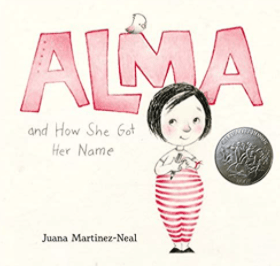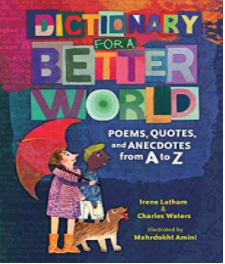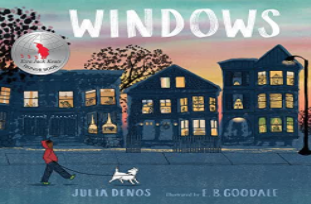
Writing workshop is the perfect time of the day in which to create opportunities for students to truly do a deep dive into their identities. The more chances a child has to examine the things that make them who they are, the greater the chance that they will broaden their capacity to generate ideas in which to write. Identity work will allow the students to recognize, in essence, what Gholdy Muhammed, in her book, Cultivating Genius, calls an “urgency of their pen” (2020). Writing about identity will not only help students know themselves better, but it will also help teachers to know and understand students better as well as build classroom communities as we share pieces of ourselves in writing. Like any other good writing unit, educators can rely on mentor texts to help model not only the craft of writing but to also offer ways in which students can consider their own identities based on the theme or subject of the text.

What’s My Name?
It wouldn’t be a study of identity if we left out the importance of one’s name. Reading and discussing picture books like, Alma and How She Got Her Name by Juana Martinez-Neal, The Name Jar by Yangsook Choi, Chrysanthemum by Kevin Henkes and the chapter, “My Name” in Cisneros’ House on Mango Street can launch students into opportunities to consider and tell their own name stories. Two Writing Teachers author Marina Rodriguez’s post in the Seen, Valued and Heard series gives teachers gorgeous and moving ways to guide students through a study of their names. In the post Marina writes, “Our name is a symbol of who we are and all that we have the possibility to become. It is an important part of our identity and it matters greatly.”
It is for this reason that so many teachers naturally gravitate toward names as a starting place for an identity study. But where could educators go from there? How can we use mentor texts to help us expand upon the idea of identity to help create the idea of community in our classrooms? Below, a student reflects in writing about her feelings about her name.

Through the Looking Glass
While Rudine Sims Bishop speaks of books acting as mirrors and windows to help students consider ideas of representation and cultural awareness, as an educator, I like to think about mentor texts acting as a looking glass since books can directly reflect to us how we may want to live our lives. Leaning on this idea of reflection, students can use the lessons within books and experiences that characters go through to consider how they may apply them to themselves and use them as vehicles to expand on their own identities. For instance, Jaqueline Woodson’s The Day You Begin is a picture book that depicts the very relatable fear of being different. Reading this together as a class could launch a study of individuality that culminates in a class-specific picture book in which each page displays a self-portrait of the student alongside a piece of writing that celebrates what makes each child an individual.

For upper grades, when planning for the looking glass effect, the intricate pages of the book Dictionary for a Better World provides a sophisticated combination of poetry, personal narrative, quotes and art that illustrate words like hope and forgiveness, diversity and humility. Students could experiment with this format by creating their own pages that represent their experiences when it comes to some of the words found in the book.

In Your Neighborhood
Another area of identity that often gets overlooked is the idea of being proud of the neighborhood from which students come. There are so many wonderful books for educators to encourage their students to excavate that neighborhood-identity. These writing experiences can also be paired with geography and social studies curricula.
One mentor text teachers could use for a neighborhood study is Windows by Julia Denos. It is a perfect mentor text to use in primary classes. After reading the lyrical prose, students could draw a picture of their own neighborhood’s windows and label what could be found behind each.

My Papi Has a Motorcycle by Isabel Quintero could launch primary students into creating and labeling a map of places in their own neighborhood that one might experience if taking a motorcycle ride. Using the same book, older students could create a digital map that serves as an anthology of writing about a student’s neighborhood in which each place is hyperlinked to a mini personal narrative depicting the experiences of students and their connections to places.

Closing Thoughts
Leading students in an identity writing unit, one that can be done in both brick and mortar or virtual learning models, gives kids opportunities to discover themselves, a powerful experience if we believe in the adage that a writer does well when they write about what they know. In addition, when educators use their own writing as models, an identity study offers a bridge for students to learn more about their teachers. Sharing the stories of who we are creates relationships built on trust, empathy and vulnerability in which all members of the classroom community are valued.

Logan Beth Fisher has been an educator for 30 years. She is currently an instructional coach at Glens Falls City School District in Upstate New York and a literacy consultant for a local Board of Cooperative Educational Services consortium. Her passions include all things reading and writing. She never leaves the house without a book in her hand. Find her on Twitter @loganbethfisher.


Thanks so much for this thoughtful post! I really love the piece about highlighting students’ neighborhoods. I am thinking of how I can connect identity with my geography study and of course incorporate writing!
LikeLike